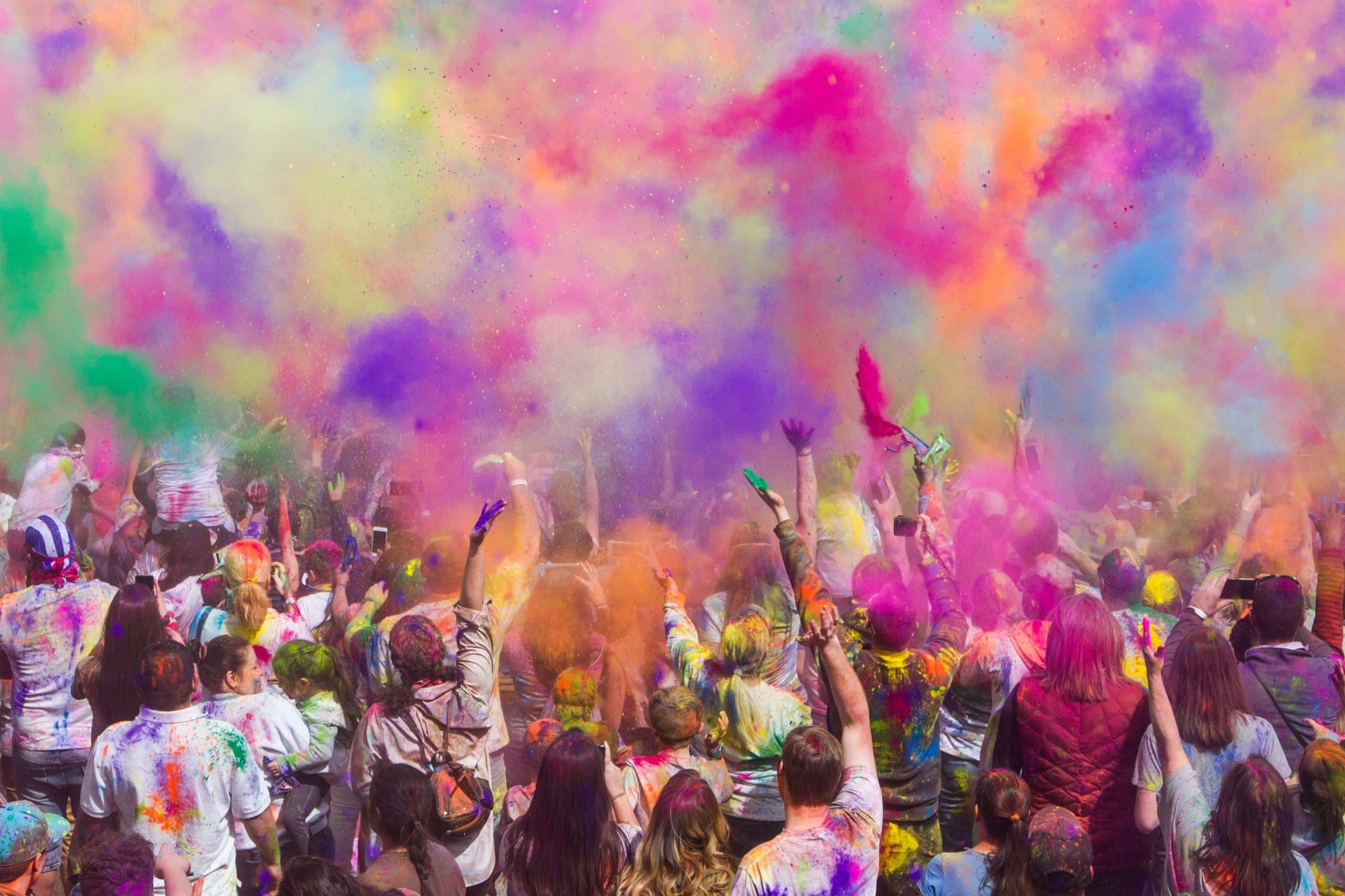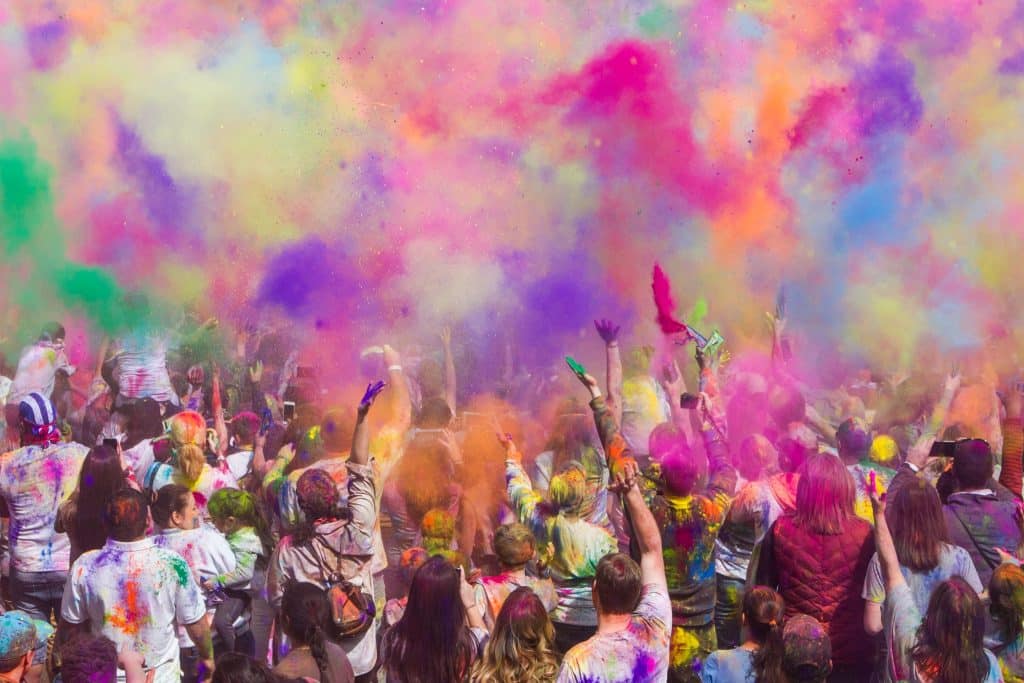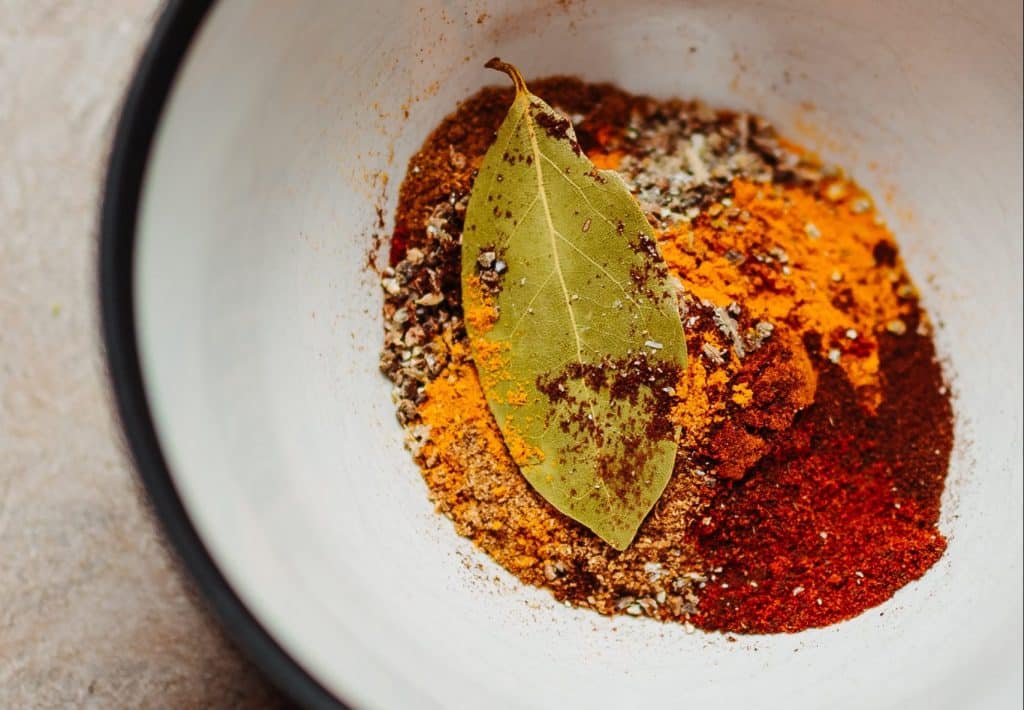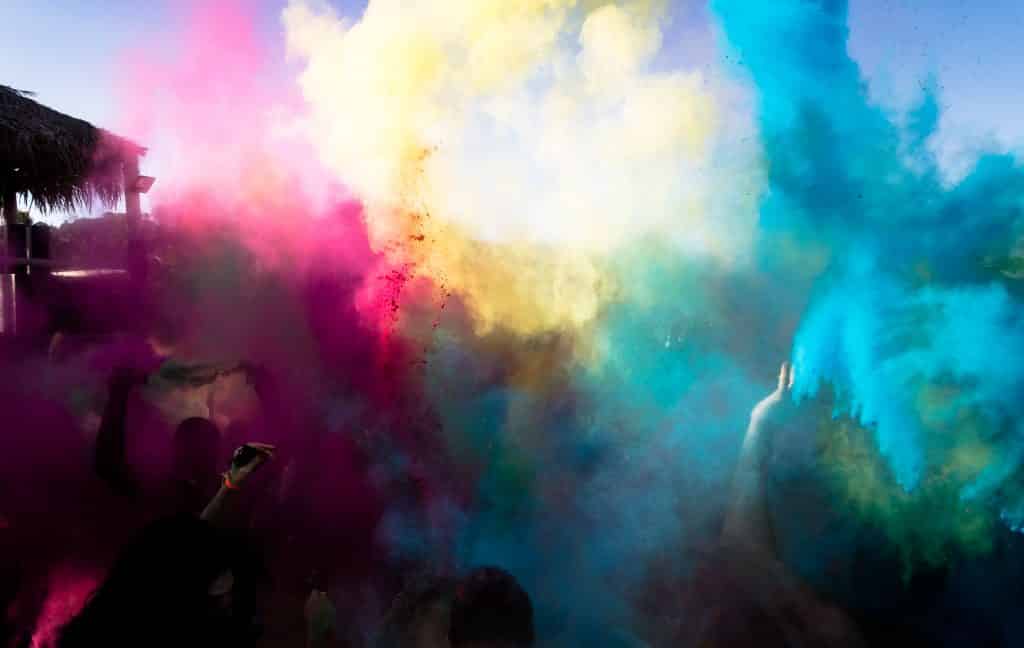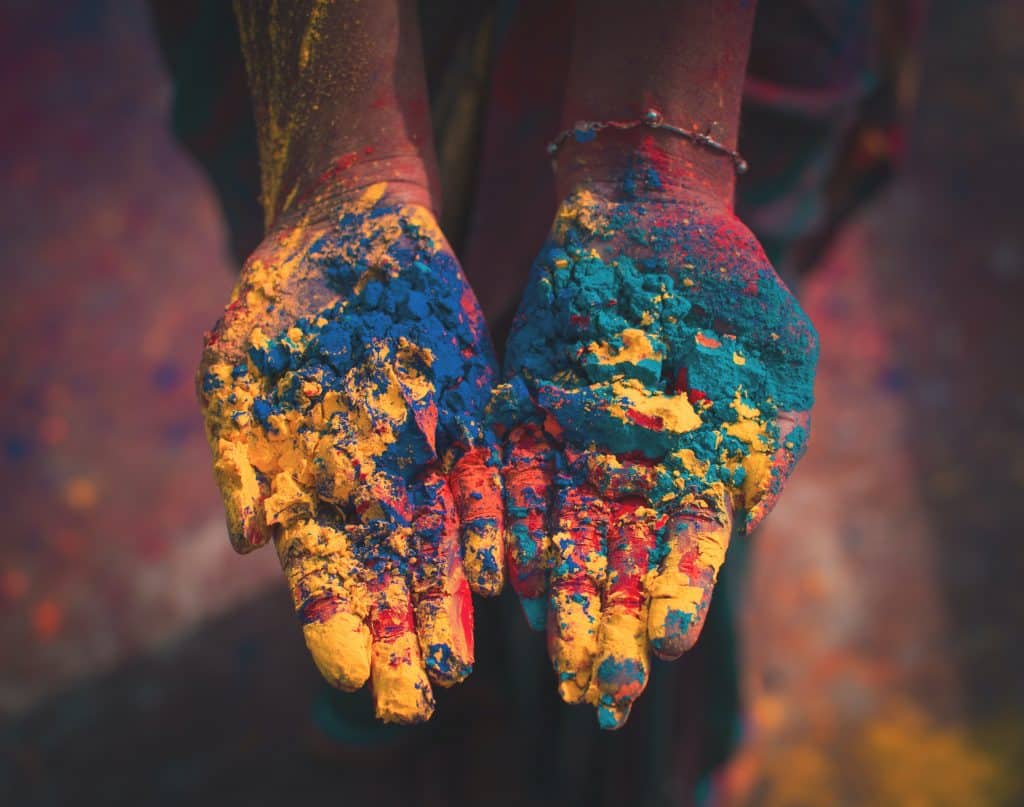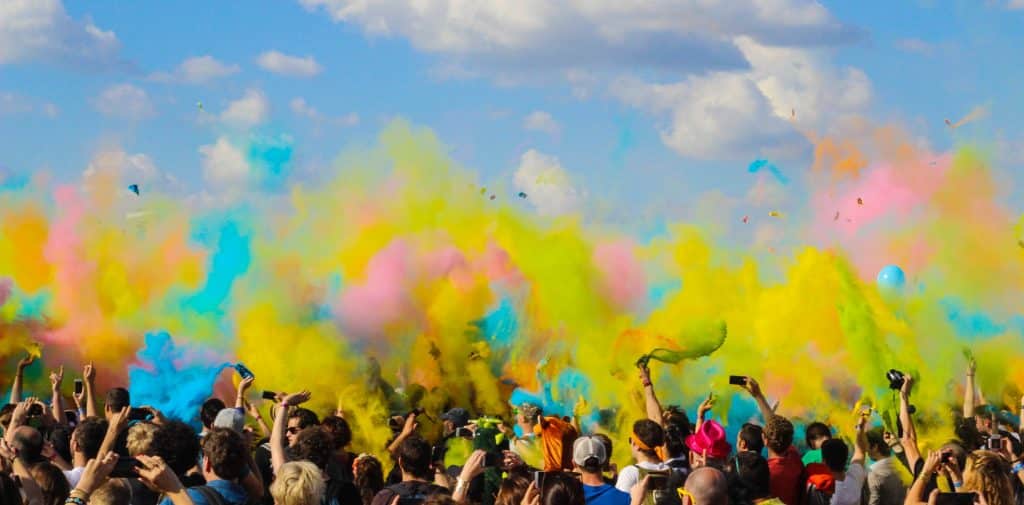Famously known as the festival of color, Holi is the most vibrant Hindu festival. Celebrated around early March, people come together to celebrate spring, nature in all its finery, love and new life in a flurry of dancing, singing, and throwing colored powder and water. However, despite this lighthearted and colorful celebration, Holi powder has had a bad rep for containing toxic compounds that could harm the human body and the environment. With roots in Hindu culture, Holi is celebrated around the world spreading as far as North America, South America and Europe. However, other celebratory events such as color runs also feature colored powders with a toxic formula similar to Holi powder.
Synthetic Holi powder is an irritant
According to India’s National Council of Science Muse, Holi color powders were derived from natural ingredients such as berries, flowers, spices. Tumeric powder was used to get the color yellow, red was derived from the hibiscus flower while Heena was used to obtained green color, according to Alive Wellness Clinic.
Holi powder that was once derived from all natural ingredients have now been swapped for commercial products laden with harmful industrial dyes. These synthetic powders offer brighter and more vibrant colors, and are cheaper to produce compared to the ones derived from plant dyes. The lack of manufacture regulations for Holi powders have since turned this fun celebration into a recipe for disaster.
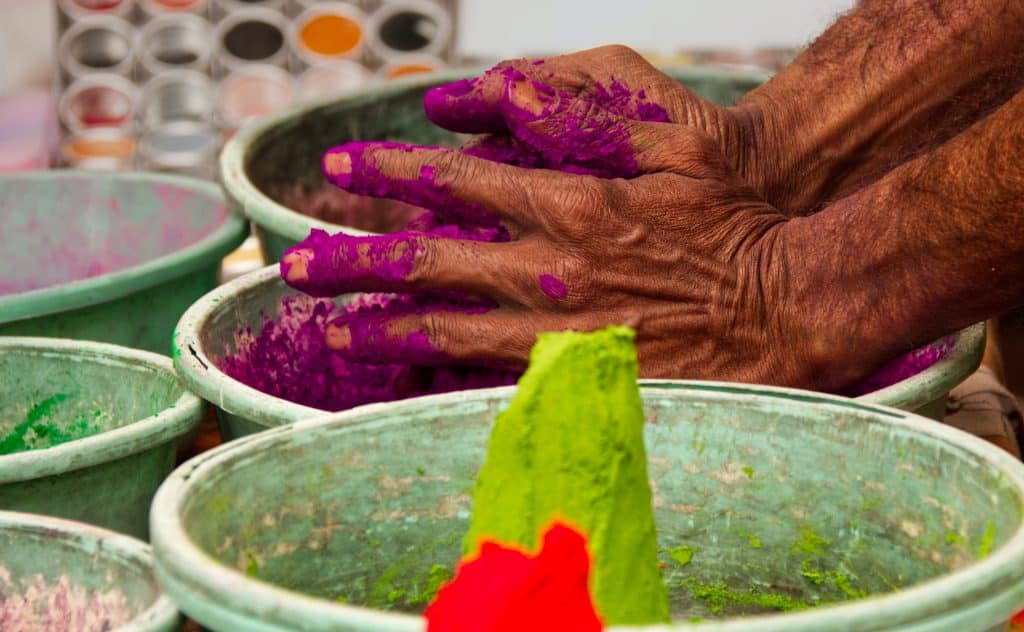
Even though some powders are labeled “organic” and / or “natural”, it is misleading as they only refer to one part of the color. One part of the color may be derived from an all natural source but mixed in silica or other substances, which is carcinogenic
Unregulated ingredient compounds such as lead oxide, cobalt nitrate, indigo, zinc salts, copper sulphate, mercury sulfate, and aluminum bromide, malachite green, rhodamine and gentian violet are used to make darker shades such as black blue, green, red, and silver Holi colors. Sometimes, mica dust and glass powder are added to give the colors an extra shine. These contaminants, some of which are carcinogens, can cause potential complications such as dermatitis and eczema through contact with sensitive parts of our body such as skin and our eyes, and through inhalation.
According to the Baby Center, here are some health effects of some specific ingredients.
- Chromium: Can cause bronchial asthma, allergies.
- Nickel: Can cause dermatitis pneumonia.
- Cadmium: Can cause weak and brittle bones (Itai Itai disease).
- Zinc: Can lead to fever.
- Iron: Can cause skin sensitivity to light.
- Mica (abeer): This is a shiny powder used to give colours a metallic look. It can cause skin allergies and irritation.
Holi powder harms the environment
A study conducted by the University of Rajasthan and Jaipur National University researched the effects of colored powder on water and soil, and found that the complex structure of polymers in artificial colors makes it almost impossible to decompose biologically. Furthermore, other substances such as acids, mica, glass powder and alkalis aren’t degradable under natural conditions as well, hence it will seep into waste water for a while. Besides that, bacteria is found to “decolorize, transform and mineralize colored soil and water in both aerobic and anaerobic conditions,” according to Daily Mail.
Safety
- Experts advise people participating in this activity to wear sunglasses, swim goggles and/ or a hat to protect their eyes.
- Applying petroleum jelly, oil or moisturizer can help reduce absorption of color on skin and hair as well as make it easier for the color to come off later
- Refrain from using detergent, kerosene, spirit, nail polish remover, alcohol or acetone to remove the colors as these are strong irritants that could break down the protective skin barrier. Instead, use normal bathing soap and moisturize skin after.
- Governments around the world should impose bans to prohibit manufacturing and tighten regulations regarding chemicals used in Holi powder.

